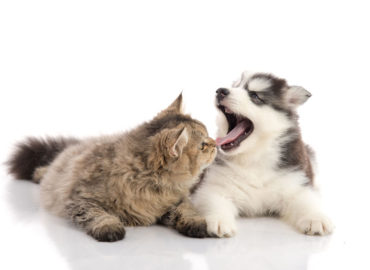Fear is a Powerful Motivator
Fear is a Powerful Motivator
Mediated by a small almond shaped structure deep within the brain called the amygdala, threatened animals have an almost instantaneous surge in heart rate, blood pressure, respiratory rate and metabolism. This so called “fight or flight reflex” is the subjective state of fear and dysregulation of this “fear pathway” is the underlying cause of most phobias and anxiety disorders.
It Starts
Excessive fear can develop due to genetics, inadequate early age socialisation, learned aversions or medical disorders. When confronted with a stimulus the pet can have a positive, neutral or aversive outcome but pets in a high state of arousal are more likely to respond with an automated fight or flight reflex. Only when the arousal state is lowered can they effectively process and make accurate conscious decisions.
Gets Worse
Every subsequent exposure to the “aversive” stimulus or trigger that does not yield a positive outcome may further aggravate the problem. The pet’s anxiety is often inadvertently reinforced or “learnt” by attempts to calm or reassure them or becomes negatively associated with punishment or aversive correction techniques. The pet also considers it “fight or flight” response successful, as it often results in the “retreat” of the “noise/dog/car/storm/person” and is more likely to repeat it in similar situations in the future. Chronic anxiety alters brain structure, connections and neurotransmitters.
Get Help!
Some of the more common anxieties we treat at Milton Village Vet include separation anxiety, noise phobias and aggression. We use evidence based drug and behavioural modification to help improve the lives of both owners and pets and restore the human animal bond.
Anxiety Mind Trick
Conventional wisdom tells us that when we get anxious or nervous, that we should try and calm ourselves down. However, research by the Harvard Business School showed students that said, “I am excited”, did better in maths test, public speaking and karaoke, when compared to students that said “I am anxious”. This cognitive trick reframes anxiety as excitement and puts people in a positive, opportunity mindset where they can focus on good outcomes and, since both are high arousal states, moving between them is far simpler than trying to magically become calm.







